Opinion
In this edition of Bullet Points, Erik Scarpati, NSSF Digital Media, Director, sits down with Alan Serven and Brian Osowiecki from the Sporting Arms and Ammunition Manufacturers’ Institute® (SAAMI®) to break down the differences and answer this critical question.
Key Differences Between 223 Remington and 5.56
- Chamber Specifications:
- 5.56 NATO Chambers: Designed with a longer throat to accommodate higher pressure rounds.
- 223 Remington Chambers: Feature a shorter throat, leading to increased pressure when firing 5.56 NATO ammunition, which can be unsafe.
- Pressure Levels:
- The 5.56 NATO operates at higher pressures compared to the 223 Remington. So, 223 Remington ammunition built to the sporting arm standard in a 223 Remington barrel will produce safe pressures when fired in a 556 chamber.
- Firing 5.56 NATO or U.S. Military specification ammunition in a 223 Remington chamber can result in pressures exceeding SAAMI limits, posing safety risks. This can overwork the action, damage the buffer tubes, increase bolt velocity and most commonly cause dropped primers, which can get down into the action of the MSR and cause jams.
So are 223 and 5.56 Interchangeable?
Short answer: It depends. While 223 Remington can be safely fired in a 5.56 NATO chamber, the reverse is not true.
- Firing 223 Remington in 5.56 NATO Chambers: Generally safe, as 5.56 NATO chambers are built to handle higher pressures.
- Firing 5.56 NATO in 223 Remington Chambers: Not recommended due to potential overpressure issues. Always consult the firearm manufacturer to confirm compatibility.
How to Determine If Your Firearm Is Compatible
The first step is always to check the markings on your barrel. Manufacturers clearly mark their barrels with the appropriate chambering, which tells you which ammunition is safe to use. Some modern rifles are marked 223/5.56, indicating that they are built with a 5.56 NATO chamber and can safely fire both types of ammunition.
Ammunition usage guidance for chambers which do not follow the standards of SAAMI or NATO/STANAG can only be made by the manufacturer of those firearms. SAAMI cannot provide any guidance for chamber designs which do not have a known design and pressure limits standardized by a recognized authority such as SAAMI, C.I.P., or NATO.
If you are uncertain, always consult the firearm manufacturer before using 5.56 NATO rounds in a rifle only marked for 223 Remington ammunition.
What Is SAAMI and What Do They Do?
SAAMI, or the Sporting Arms and Ammunition Manufacturers’ Institute, plays a crucial role in setting industry standards for firearms and ammunition. Their primary mission is to ensure interchangeability, reliability and safety by establishing dimensional and pressure standards for ammunition and the chambers that fire them. This ensures that ammunition performs safely and consistently across different firearms.
Interchangeability in Other Calibers
This isn’t the only case where ammunition interchangeability comes into question. SAAMI provides reference materials outlining other safe ammunition alternatives. View Generally Accepted Firearms and Ammunition Interchangeability guidelines here.
The best way to verify that you are using the correct ammunition is to check the head stamp on the
ammunition to confirm that it matches the markings on the firearm.
Some types of ammunition, most notably rimfire and cartridges produced for military use, do not have cartridge markings on the head stamp of the case. In those instances, check the original ammunition packaging to determine its proper designation. If you have any doubt about the designation of the ammunition, you should not use it until you have it examined by a qualified person.
Remember – just because a round of ammunition can fit into a firearm’s chamber, barrel, or action – this does not necessarily mean that it is safe to use that ammunition in that firearm. Again, always verify that the ammunition to be used matches the markings on the firearm.
Firearm and headstamp markings and other references to specific cartridges and chambers may utilize the full official name, or other approved abbreviated names. View Generally Accepted Cartridge and Chamber Names here.
SAAMI’s Role in Standardizing New Cartridges
Another common question is how new ammunition cartridges become standardized. SAAMI does not “approve” new cartridges; rather, they standardize them to ensure industry-wide safety and reliability. To propose a new cartridge for standardization, a company must be a SAAMI voting or associate member and take responsibility for:
- Producing reference ammunition for ballistic testing
- Manufacturing proof ammunition for safety validation of firearms
- Creating inert action-proving dummies for firearm testing
This rigorous process ensures that newly introduced cartridges meet SAAMI safety standards before reaching consumers.
Final Thoughts
Understanding the differences between 223 vs. 5.56 is essential for firearm owners. While 223 Remington ammunition is safe to fire in a 5.56 NATO chamber, the reverse can create dangerous overpressure issues. The best practice is to always check your firearm’s barrel markings and consult the manufacturer if you are unsure.
For more detailed information, visit SAAMI.org, which provides interchangeability charts and industry guidelines to help firearm owners make informed decisions.
Live Inventory Price Checker
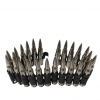
|
5.56 NATO, 25 Round Belt, DDI Proving Round- (Dummy) | KAK Industry | $ 104.95 |
|
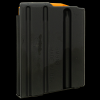
|
Ruger SR-556 .223 Rem, 5.56 NATO 10-Round Steel Magazine | GunMag Warehouse | $ 20.99 |
|
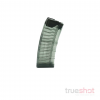
|
Lancer - L5AWM - .223 REM / 5.56 NATO - 30 ROUNDS Translucent Smoke | True Shot Ammo | $ 21.99 |
|
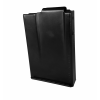
|
Accurate Mag AICS Magazine - .223 Rem / 5.56 NATO, 10 Round | Ultradyne | $ 69.00 |
|
History and Development of .300 Blackout vs 5.56 NATO / .223 Rem
About The National Shooting Sports Foundation
NSSF is the trade association for the firearm industry. Its mission is to promote, protect and preserve hunting and shooting sports. Formed in 1961, NSSF has a membership of thousands of manufacturers, distributors, firearm retailers, shooting ranges, sportsmen’s organizations, and publishers nationwide. For more information, visit nssf.org



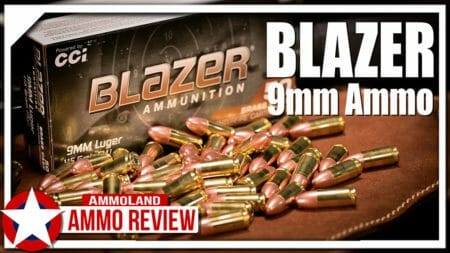
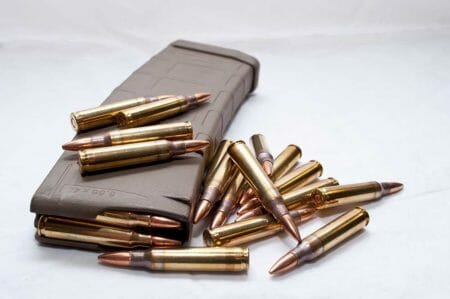


The fastest way to know what the chamber of a rifle has is with a function gauge set (that measures the chamber cut and throat for 5.56,223,223 Wylde) and with an incremental headspace gauge set. For the AR15 type platform, these gauges are vital when checking any AR platform that is a duty type weapon. Many AR barrels are not cut properly with the proper throat and short/tight chambers are quite common. This can effect reliability and accuracy.
If you’d like to listen to a seven-minute explanation with additional potential issues of shooting 5.56 in a .223, here is a link to an episode of Tom Gresham’s Gun Talk on “.223 Day” (2/23 – Feb, 23, 2025) where he talks with Jeff Hoffman from Black Hills Ammunition (http://www.black-hills.com/about-us/).
He talks about the different pressure testing procedures between military and civilian ammunition and the effects of rapid fire, ambient air temperature, and suppressors.
https://open.spotify.com/episode/7ESzgzrZcvPB6PQWH8wgum
(25:30-32:20) / No account required)
Yes yes
What this article doesn’t tell you is what are the pressures and how are they measured. SAMMI uses piezoelectric pressure sensors that give a curve on an oscilloscope in psi over the short time of firing. The CIP (NATO) uses an older method of copper crushers. That uses a copper pellet that’s crushed by the chamber pressure being measured. It results in CUP or copper units of pressure that can be converted to psi. The conversion factor is 5/6. This conversion factor makes CIP’s 60,000 CUP the same as SAMMI’s 50,000 psi. Also, CIP only measures the bullet weights used… Read more »
Look a for rifle with a 223 Wylde chamber. It’s a hybrid throat form that supposedly optimizes performance with either 5.56 or .223. I have several and have had good luck with them, accuracy wise.
The simple solution would be to get a 5.56 NATO chambered weapon so .223 can be fired without the worry of damaging self or firearm.